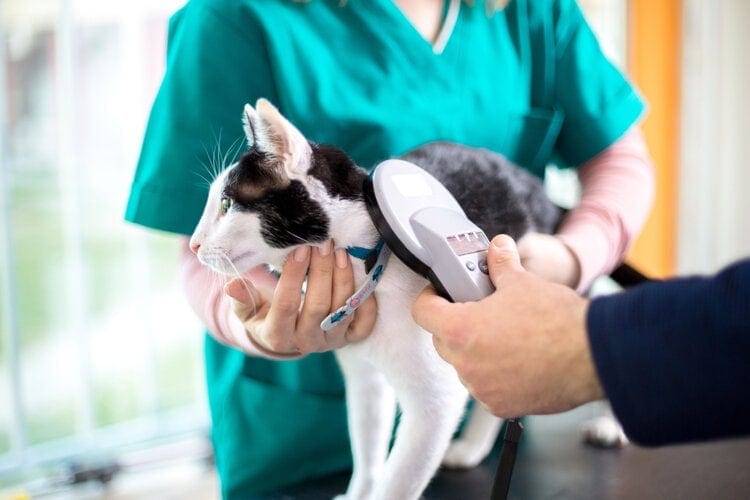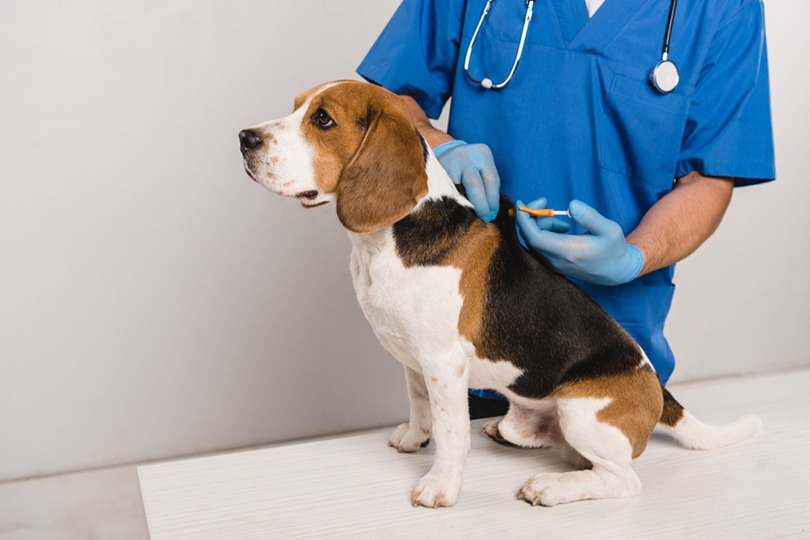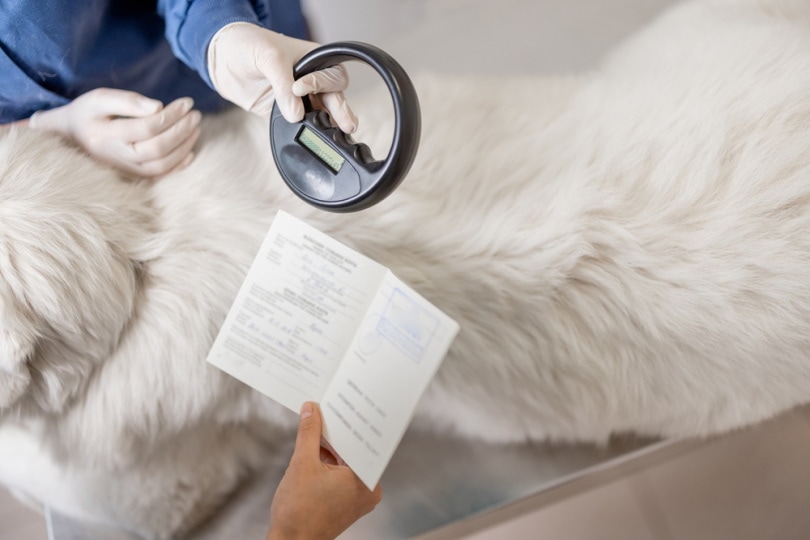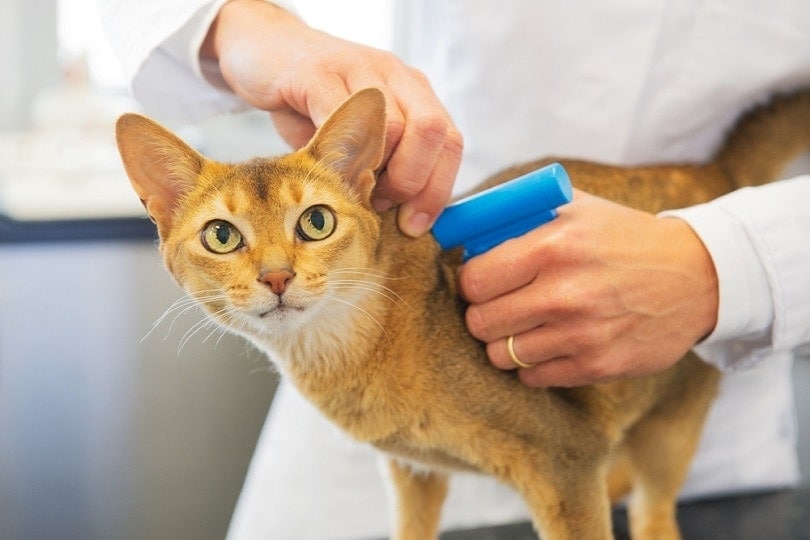
Finding your cat or dog has vanished is a situation no loving pet parent ever wants to face, so it’s important to take measures that will help reunite you with your pet in the event that they do get lost. Not only is microchipping a legal requirement for pet owners in most Australian states, but it’s also one of the most effective ways of getting your pet back if they do get lost.
In this post, we’ll explain further why microchipping is so important, how it works, and give you a heads up as to the average cost of microchipping in Australia.

What Is Microchipping?
When a vet microchips your cat or dog, they insert a small chip under the skin at the back of the neck. This chip stores an identification number that has been assigned to your pet, which can be scanned to find out who they belong to.
The chip is about the size of a grain of rice and is implanted with a needle. Vets will perform the procedure in a way that causes no—or at least minimal depending on your pet’s pain tolerance level—discomfort to your pet.
The Importance of Microchipping

If your cat or dog wears a collar with your information on it, this can easily fall off or be removed. A microchip is the best way to increase your chances of getting your pet back if they go AWOL—people often bring lost animals to a veterinary clinic or rescue association, where they can be scanned and identified quickly.
As we touched on above, microchipping is also now a legal requirement in some countries—including several Australian states and territories. This is an important step for animal welfare reasons and helps makes things easier on vets and rescue associations. Pet owners can be fined if they fail to comply with the microchipping laws.
How Much Does Microchipping in Australia Cost?
It typically costs around $45 AUD ($30 USD) to get your cat or dog microchipped in Australia, but some organizations do it for as cheap as $10. In some locations, it can be more expensive. To get a better idea, we checked out prices from real clinics in different locations around Australia.
Additional Costs to Anticipate

In Australia, it’s a legal requirement to register cats and dogs before they reach a certain age in many locations. Fees vary depending on whether your cat or dog has already been microchipped and/or desexed. In some cases, registration is free. Examples include if a dog or cat comes from an eligible pound, if they’re a working animal, or if the owner is a pensioner.
On the City of Sydney’s homepage, the registration fee for a desexed dog is listed as $69 AUD ($46 USD). For a desexed cat, the fee is $59 AUD ($40 USD). If the pet is registered late or has not yet been microchipped or desexed, this may incur extra fees.

How Often Should I Get My Dog or Cat Microchipped?
You only need to get your pet microchipped once. However, you do need to keep your pet’s microchip information up to date, for example, if you move house or change your phone number.
If you need to change your pet’s microchip details but are unsure which database your pet is registered to, you can go to petaddress.com.au and search for your pet’s microchip number there.
Does Pet Insurance Cover Microchipping?

Typically, no, because comprehensive insurance plans are designed to cover accidents and illnesses rather than routine procedures. However, some pet insurance providers offer wellness plans in addition to standard accident and illness plans. Wellness plans typically reimburse you for routine procedures like vet checkups, nail trimming, vaccinations, and microchipping.
What To Do for Your Pet Post-Microchipping
Though microchipping increases your prospects of your pet being returned to you after going missing, it’s not foolproof. Cat and dog-proofing potential escape routes in your home—like windows, doors, and yards—is just as important.
You might want to consider pet window guards, which are pretty easy to knock together yourself with a few pieces of wood, some screws, staples, and some pet safety netting. If you’re not into DIY, there’s always the option of getting them professionally made.
This goes without saying but making sure your dog is wearing a harness that properly fits them when out walking is also key, as is ensuring they know basic commands like “come” and “stay” for if they do happen to slip the leash.
Another common reason dogs escape is boredom. Providing a loving, mentally and physically stimulating environment where your dog can play and exercise enough may help prevent escape attempts.
When it comes to collars with ID tags, experts and pet owners are divided. One of the pros of identification collars is that they can help get your cat or dog returned to you if they wander off, but some have expressed concern regarding the safety of these collars. They do have the potential to get stuck on things, which can be distressing and even dangerous for your pet.
If you do decide to kit your cat or dog out with a collar for identification purposes, consider getting a quick-release—also known as “breakaway”—collar.

Conclusion
Microchipping is just part and parcel of being a responsible pet parent. Wherever you are in the world, this quick, simple, and often inexpensive procedure can help save you a great deal of heartache down the line. If you’re ready to get your cat or dog microchipped, please get in touch with your local veterinary clinic to find out more about fees as they tend to vary by region and clinic.
Featured Image Credit: Lucky Business, Shutterstock

